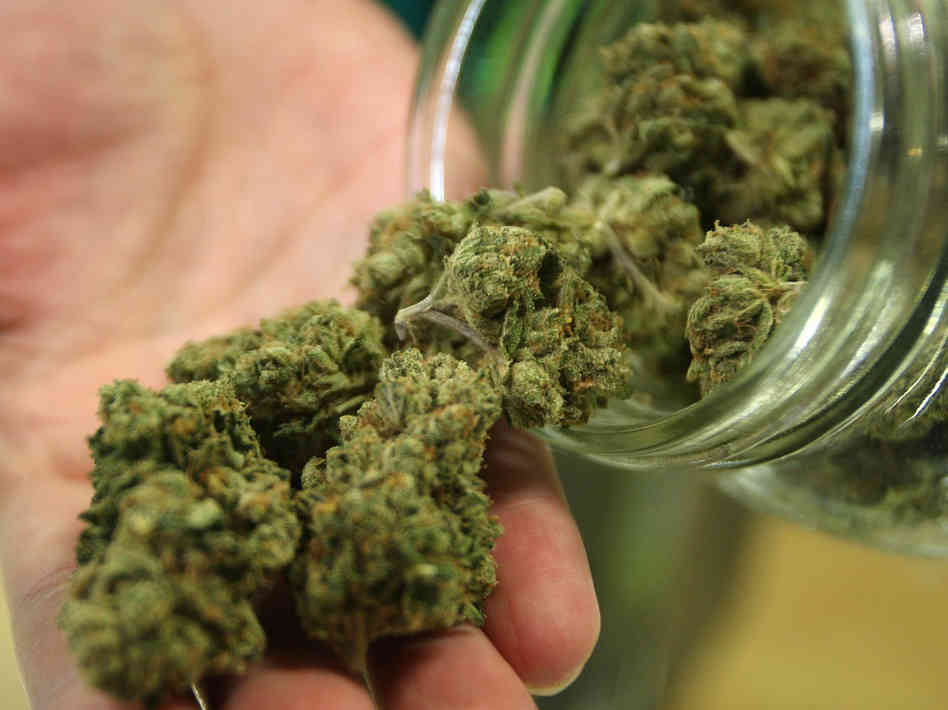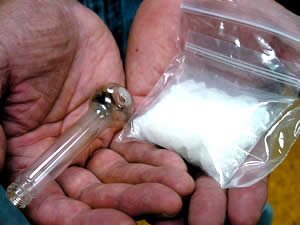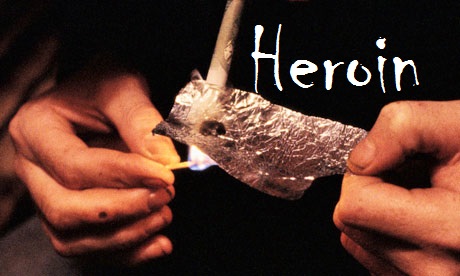 Cocaine is a stimulant, which means it speeds up the brain and nervous system. The effects that people get from cocaine are related to the amount they have, which can vary significantly. Cocaine has both a pain killing effect because it blocks the transmission of pain impulses from the nerves to the brain, and a “high” because it stimulates and energizes people to greater alertness, intensifying their mood. Cocaine looks like white powder and can be smoked, snorted and injected.
Cocaine is a stimulant, which means it speeds up the brain and nervous system. The effects that people get from cocaine are related to the amount they have, which can vary significantly. Cocaine has both a pain killing effect because it blocks the transmission of pain impulses from the nerves to the brain, and a “high” because it stimulates and energizes people to greater alertness, intensifying their mood. Cocaine looks like white powder and can be smoked, snorted and injected.
What is Cocaine?
The narcotic drug cocaine comes from the leaves of the Bolivian coca plant (Erythroxylumcoca) or the Peruvian coca plant (Erythroxylum novgranatense) which is processed to make the drug.
Street cocaine
Cocaine hydrochloride is the product (in various strengths and forms) known as street cocaine. The product is extracted from coca paste by the addition of hydrochloric acid, and produces a fine powder used for snorting or injecting. It is estimated that street cocaine can be “cut” anywhere from one to eight times. Cutting means adding chemicals such as glucose and lactose to make it go further and therefore make more profit. The great variability in strength of “street cocaine” adds to the risk of overdose, due to not knowing how much cocaine is in the powder.
Crack cocaine
Crack cocaine is cocaine made into a form that can be smoked. The process of making crack cocaine involves treating cocaine with various products and chemicals that free the cocaine base from the hydrochloride and lower the temperature at which the cocaine can be melted. It is then removed and allowed to dry and broken into “rocks”. Each rock usually ranging from one tenth to half a gram. Crack is white to light brown or beige in color, and is in the form of slivers or crystalline rocks. Cocaine treated in this way is known as free base and the process is called freebasing. Crack gets its name because when it is smoked, the baking powder residue left in it makes a crackling sound. Crack is extremely addictive because smoking causes its effects to be felt within 10 seconds after use.
Other names
Cocaine is also known as Bump, Coke, Snow, Toot, Lady, Flake, “C”, Candy, Charlie, Sherbert, Charles, Blow, Dust, Bernice, Dream, Nose Candy. Crack is also known as Rocks, Wash, Freebase.
Absorption by the body
Smoking
Cocaine is usually smoked in a pipe and the vapor is inhaled into the lungs where it is then absorbed into the bloodstream. Cocaine users who smoke the drug achieve maximum physiological effects approximately two minutes after inhalation. When cocaine is administered as an inhalant (heated to allow vaporization) it is absorbed almost immediately into the bloodstream, taking around 20 seconds to reach the brain.
Snorting/Sniffing
When cocaine is snorted, cocaine powder is inhaled through the nostrils and absorbed into the bloodstream. The effects are felt more slowly than when it is smoked.
Injecting
Cocaine powder is sometimes dissolved in water and injected directly into the bloodstream. When the levels of cocaine in the body start to decrease, the user can start to feel “the crash” which involves feeling sad, frustrated, depressed, anxious and sometimes suicidal. Often people become dependent on cocaine because they take it again before these symptoms start to avoid the “crash”.
Effects on the body
Because cocaine is a stimulant, the effects after taking it can, possibly cause a person to:
- feel good and confident
- be excited or upset
- take more risks than usual
- feel aggressive
- be less hungry
- feel alert and energetic
- want to have sex
Initially the effects of cocaine will lead to a high feeling for the user, but continued use will result in tolerance for the drug. Cocaine and crack are highly addictive drugs. Cocaine brings about strong feelings of ecstasy, creating a craving for the drug. Some of the effects of long term use include the following:
- Aggressive and violent behavior
- Psychosis
- Paranoia
- Anxiety disorders
- Memory problems
- Hallucinations
- Depression
- Snorting cocaine can cause a stuffy or runny nose and chronic snorting can cause a rupture of the membrane in the nose causing blood noses
- Cocaine may also harm the health and development of infants born to women who use cocaine during pregnancy
- Injecting cocaine puts the user at risk of contracting AIDS, bacterial infections, hepatitis and other diseases, particularly when injecting equipment is shared or not sterile
People using cocaine and crack put themselves at risk of death every time they use. Cocaine can kill a person in the following ways:
- Heart attack – cocaine raises the heart rate and constricts the arteries. The heart has less oxygen than it needs to operate and this may cause a heart attack.
- Stroke – cocaine increases blood pressure and may cause the blood vessels in the brain to burst. This is a stroke.
- Cardiac arrest – Cocaine can disrupt the brain’s electrical message to the heart. The heart beats inconsistently and cannot be regulated, resulting in a possible cardiac arrest.
- Overdose – drop in heart rate, slowing of breathing and circulation, unconsciousness. The amount needed for an overdose is unknown and is different for everyone.
Some research has shown that if a woman who is pregnant uses cocaine, her developing baby is more likely to have delayed development and learning problems, which continue during school. Other research has not shown a developmental problem.
Detoxification
Withdrawal from cocaine may produce similar symptoms to those of someone withdrawing from amphetamines, but for a shorter period. Withdrawal symptoms may include depressed mood, fatigue, disturbed sleep or dreaming, and suicidal thoughts. Cocaine withdrawal symptoms are gone after nearly 24 hours. However, the person may experience a few days of feeling depressed, guilt, and craving for the drug.
Because cocaine is so addictive, it will make giving up very difficult. If you want to stop, talk to someone you can trust (who is not using) about wanting to give up. If there is no one close to you that you can talk to, see a counselor and ask for advice on dealing with quitting. You do not have to give up alone. There may even be a support group or organization to help you through.

 Marijuana is usually smoked as a cigarette (joint) or in a pipe. It is also smoked in blunts, which are cigars that have been emptied of tobacco and refilled with marijuana. Since the blunt retains the tobacco leaf used to wrap the cigar, this mode of delivery combines marijuana’s active ingredients with nicotine and other harmful chemicals. Marijuana can also be mixed in food or brewed as a tea. As a more concentrated, resinous form it is called hashish, and as a sticky black liquid, hash oil.* Marijuana smoke has a pungent and distinctive, usually sweet-and-sour odor.
Marijuana is usually smoked as a cigarette (joint) or in a pipe. It is also smoked in blunts, which are cigars that have been emptied of tobacco and refilled with marijuana. Since the blunt retains the tobacco leaf used to wrap the cigar, this mode of delivery combines marijuana’s active ingredients with nicotine and other harmful chemicals. Marijuana can also be mixed in food or brewed as a tea. As a more concentrated, resinous form it is called hashish, and as a sticky black liquid, hash oil.* Marijuana smoke has a pungent and distinctive, usually sweet-and-sour odor. Alcohol affects people differently depending on their size, sex, body build, and metabolism. General effects of alcohol are a feeling of warmth, flushed skin, impaired judgment, decreased inhibitions, lack of muscular in coordination, slurred speech, and memory and comprehension loss. In states of extreme intoxication, vomiting is likely to occur and may be accompanied by incontinence, poor respiration, and a fall in blood pressure. In cases of severe alcohol poisoning coma and death can occur.
Alcohol affects people differently depending on their size, sex, body build, and metabolism. General effects of alcohol are a feeling of warmth, flushed skin, impaired judgment, decreased inhibitions, lack of muscular in coordination, slurred speech, and memory and comprehension loss. In states of extreme intoxication, vomiting is likely to occur and may be accompanied by incontinence, poor respiration, and a fall in blood pressure. In cases of severe alcohol poisoning coma and death can occur. Widely available in the 1960’s, meth faded in the ’70s, as controls were tightened on legal production, which reduced its diversion onto the black market. But in the early ’90s, meth made a huge comeback. Since then its popularity has been rising and it is currently the most widely abused deadly drug used.
Widely available in the 1960’s, meth faded in the ’70s, as controls were tightened on legal production, which reduced its diversion onto the black market. But in the early ’90s, meth made a huge comeback. Since then its popularity has been rising and it is currently the most widely abused deadly drug used. Heroin has made a comeback. As if the current epidemic of prescription painkillers wasn’t enough, addicts are finding pure heroin cheaper and easier to get than ever before. As a result heroin is getting more and more media attention.
Heroin has made a comeback. As if the current epidemic of prescription painkillers wasn’t enough, addicts are finding pure heroin cheaper and easier to get than ever before. As a result heroin is getting more and more media attention.